The comparison of brass to bronze to copper and its copper alloys is crucial as these metals can be easily confused. In addition, the distinction between these materials is also very subtle. As a result, development engineers or designers can be seriously confused when it comes to material selection. In particular, the similarity of these metal constituent elements makes it more difficult to classify and select them.
Although they differ in color, they are not noticeable, and you may not be able to quickly identify which models of these metals are. What's harder is that you can't use any of them for all apps. Although they have many similarities, such as the same proportion of copper-containing elements. However, the proportions of other metal elements are different, which results in different copper alloys with many unique properties. Therefore, the choice of copper in different application scenarios is not the same and needs to be taken seriously.
This article provides you with a detailed comparison that will go from material type differences in different countries to establishing the differences between brass, bronze, copper, and copper alloys. It also outlines their unique properties, available alloys, applications, and more. The information here will help you choose the best metal for your metal project.
The reason why copper models in different countries are different is because different countries and regions have their systems and practices in standardization and naming. As an important metal material, copper is widely used in various applications in different countries and regions, such as industrial manufacturing, construction, electronics, and other fields. To ensure the quality, performance, and suitability of materials, each country and region has developed its standards and specifications, including the nomenclature and model system of copper.
Standards and norms in different countries and regions may be affected by factors such as history, technology, industrial demand, and domestic and foreign markets, so the naming and model of copper materials may vary internationally. This difference sometimes leads to difficulties in understanding cross-border exchanges and cooperation but it is better able to meet specific needs and requirements in the respective domestic markets.
The following is a comparison table of copper and copper alloy models in major countries in the world:
The above table describes the model standards of copper and copper alloys in major countries in the world, and engineers, technicians and procurement personnel are invited to pay special attention to relevant data, which is an important basis for global supply chain management.
The above table describes the model standards of copper and copper alloys in major countries in the world, and engineers, technicians, and procurement personnel are invited to pay special attention to relevant data, which is an important basis for global supply chain management.
Commonly used copper alloys are divided into four categories: copper, brass, bronze and cupronickel. As a more common type of copper on the market, the following is the difference between these types of copper by richconn:
Copper: An alloy composed of one or several other elements added to a pure copper matrix. Pure copper is purple-red, also known as copper. Pure copper has a density of 8.96 and a melting point of 1083 °C, which has excellent electrical conductivity, thermal conductivity, ductility, and corrosion resistance. It is mainly used to make electrical equipment such as generators, busbars, cables, switching devices, transformers, heat exchangers, pipelines, flat collectors, and other heat-conduction equipment for solar heating devices.
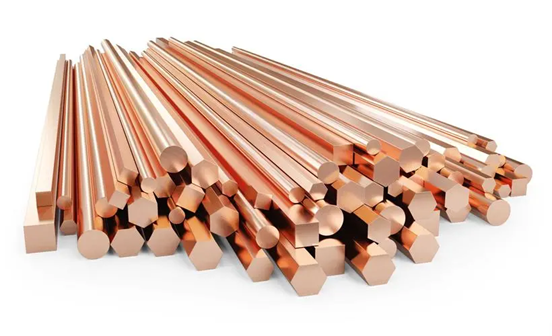
Brass: A copper alloy with zinc as the main added element, with an aesthetic yellow color, collectively known as brass. Copper-zinc binary alloys are called ordinary brass or simple brass. Brass above the ternary is called special brass or complex brass. Brass alloys containing less than 36% zinc are composed of solid solutions and have good cold working properties, such as brass containing 30% zinc is commonly used to make cartridge cases, commonly known as bullet case brass or seven-three brass. Brass alloys containing zinc between 36~42% are composed of solid solutions, of which the most commonly used is 64 brass containing 40% zinc. To improve the performance of ordinary brass, other elements such as aluminum, nickel, tin, silicon, lead, etc. are often added. Aluminum can improve the strength, hardness, and corrosion resistance of brass, but reduce plasticity, suitable for sea wheel condenser pipes and other corrosion-resistant parts. Tin can improve the strength of brass and corrosion resistance to seawater, so it is called naval brass, which is used as ship thermal equipment and propellers. Lead can improve the cutting performance of brass; This free-cutting brass is often used as a watch part. Brass castings are commonly used to make valves and pipe fittings.
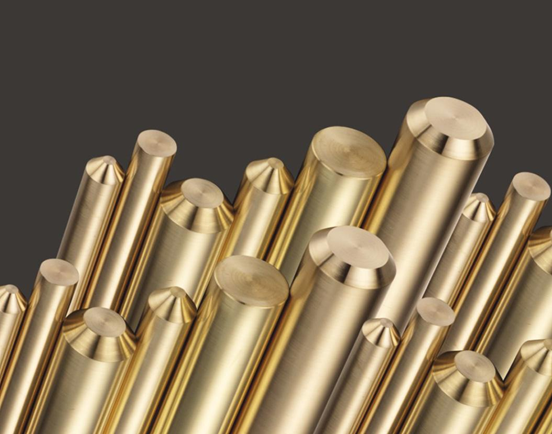
Bronze: originally refers to copper-tin alloys, and copper alloys other than brass and white copper are called bronze, and often preceded by the name of bronze with the name of the first main added element. Tin bronze has good casting performance, friction reduction, and mechanical properties, and is suitable for the manufacture of bearings, worm gears, gears, etc. Lead bronze is a bearing material widely used in modern engines and grinding machines. Aluminum bronze has high strength, good wear resistance, and corrosion resistance, and is used to cast high-load gears, bushings, marine screws, etc. Bronze plating and phosphor bronze have high elastic limits and good electrical conductivity, suitable for the manufacture of precision springs and electrical contact elements, bronze plating is also used to manufacture non-sparking tools used in coal mines and oil depots.
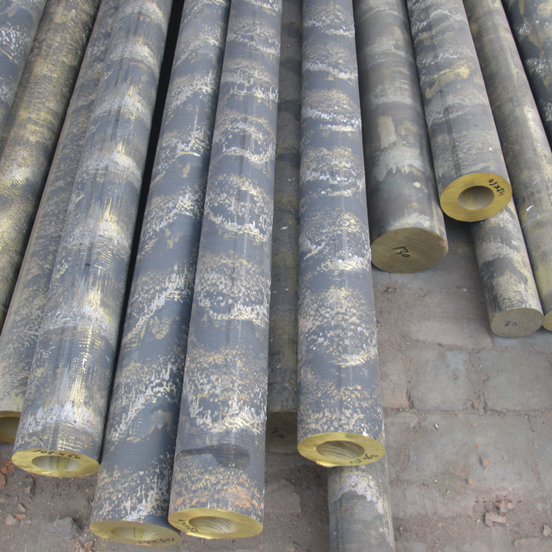
Cupronickel: A copper alloy with nickel as the main added element. Copper-nickel binary alloy is called ordinary copper; Copper alloys with iron, zinc, aluminum, and other elements are called complex cupronickel. Industrial cupronickel is divided into two categories: structural cupronickel and electrical cupronickel. Structural cupronickel is characterized by good mechanical properties corrosion resistance, and beautiful color. This cupronickel is widely used in the manufacture of precision machinery, chemical machinery, and ship components. Electrical cupronickel generally has good thermoelectric properties. Manganese copper, constantan, and copper are suitable copper with different content and are materials used in the manufacture of precision electrical instruments, rheostats, precision resistors, strain gauges, thermocouples, etc.
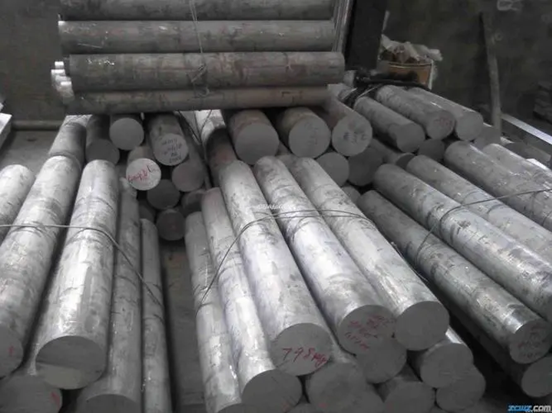
Brass alloy
The elemental composition of brass gives it versatility in making several different alloys. Some of the most popular brasses in rapid prototyping include:
C26000: Cartridge brass, containing about 70% copper and 30% zinc, has good cold working performance, suitable for automotive, ammunition, hardware, and other fields.
C26130: Semi-red brass, containing about 68% copper, 30% zinc, and 2% lead, with good corrosion resistance, suitable for the manufacture of pipes, valves, etc.
C27000: Zinc brass, containing about 63% copper and 37% zinc, has good processing properties, suitable for manufacturing hardware, electronic parts, etc.
C27200: Brass, containing about 65% copper and 35% zinc, suitable for industrial applications, with good plasticity.
C28000: Brass, containing about 60% copper and 40% zinc, with good processability, suitable for manufacturing electrical connectors, pipes, etc.
C33000: High zinc brass, containing about 70% copper and 30% zinc, has good processing performance, suitable for manufacturing pipes and other parts.
C34500: Lead brass, containing about 61% copper, 36% zinc, and 3% lead, with good self-lubricating properties, suitable for the manufacture of bearings, gears, etc.
C35300: Watch brass, containing about 60% copper and 40% zinc, has good processing performance, suitable for manufacturing high-precision parts such as clocks and watches.
C36000: Common brass alloy, containing about 61.5% copper and 38.5% zinc, with excellent plasticity and processing properties, commonly used in the manufacture of pipe fittings, fasteners, valves, etc.
C46400: Navy brass containing approximately 59% copper, 39% zinc, and 1% manganese with excellent corrosion and temperature resistance for manufacturing parts in marine environments.
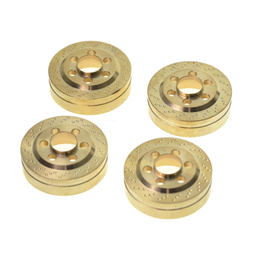
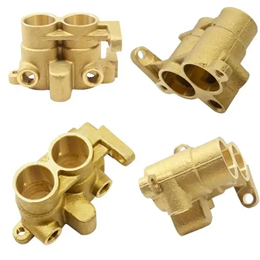
Bronze alloy
Depending on their composition, several bronze alloys are also offered. The most common grades are:
C51000: Phosphor bronze, containing about 5% tin and 0.2% phosphorus, excellent corrosion resistance and plasticity. Suitable for the manufacture of electronic components, pipes, and decorations.
C52100: Tin bronze, containing about 8% tin, with good corrosion resistance and mechanical properties. It is often used in the manufacture of bearings gears and other parts.
C93200: High zinc bronze containing about 7% zinc, suitable for manufacturing bushings, gaskets, flanges, and other parts. It has good self-lubricating performance.
C95400: Aluminum bronze, containing about 11% aluminum, with high strength and corrosion resistance. It is often used in the manufacture of ship parts, valves, gears, etc.
C54400: Brass bronze, containing a certain proportion of brass and tin, with good corrosion resistance and mechanical properties. Suitable for manufacturing bearings, gaskets, gears, etc.
C5101: Chromium bronze, containing about 1% chromium, has corrosion and wear resistance. It is suitable for manufacturing valves, pump bodies, and other parts.
C5441: Nitin-cin brass, containing about 1% nickel and 3% tin, with good corrosion resistance and mechanical properties. Suitable for the manufacture of electrical connectors, pipes, and valves.
C5102: Aluminum-silicon bronze, containing about 2% aluminum and 2% silicon, with high strength and abrasion resistance. Suitable for manufacturing highly loaded mechanical parts.
C64200: Manganese bronze, containing approx. 1% manganese, with excellent wear resistance and mechanical properties. It is commonly used in the manufacture of bearings and gears.
C63000: Nickel-aluminum bronze, containing about 5% aluminum and 5% nickel, with high strength and corrosion resistance. Suitable for manufacturing heavy machinery parts.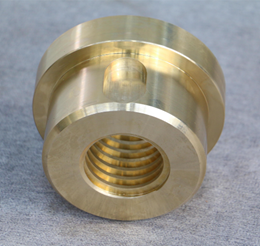
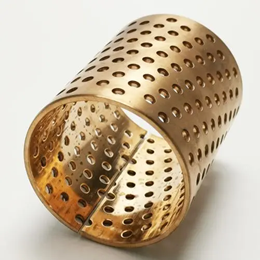
Pure copper and copper alloys
Copper materials are another useful option in rapid prototyping manufacturing. Some of the most commonly used pure copper and copper alloys include:
C11000: Oxygen-free copper, with high toughness and good electrical conductivity, commonly used in the manufacture of cables, wires, and electronic components.
C10200: Electrolytic copper with the highest thermal and electrical conductivity for use in the manufacture of electrical appliances, electronic parts, and heaters.
C12200: Good weldability and plasticity, suitable for the manufacture of pipes, refrigeration equipment, and building materials.
C14500: Copper tellurium, containing about 0.7% tellurium, has good electrical conductivity, mechanical properties, and processability, suitable for manufacturing electronic components.
C15100: Contains about 1% antimony, has good corrosion resistance and electrical conductivity, suitable for manufacturing electronic parts, cable shielding, etc.
C16200: Contains about 3% aluminum, has high strength and excellent corrosion resistance and is suitable for manufacturing parts in corrosive environments.
C19000: Contains about 0.5% arsenic, has high electrical conductivity and good mechanical properties, and is suitable for the manufacture of electronic components and connectors.
C70600: Nickel-copper alloy, containing about 10% nickel, has good corrosion resistance and high-temperature strength, suitable for manufacturing chemical equipment and marine engineering.
C71500: Copper-nickel alloy, containing about 30% nickel, has good corrosion and wear resistance, suitable for the manufacture of seawater treatment equipment and automotive parts.
C75200: Chromium-copper alloy containing approximately 1% chromium for corrosion resistance and high strength for use in the manufacture of valves, pipes, and marine equipment.
C77000: Copper-nickel-zinc alloy, containing about 55% copper, 40% nickel, and 5% zinc, with good corrosion resistance and high-temperature strength, suitable for manufacturing chemical equipment and electrical parts.
C82500: Copper-nickel-titanium alloy containing about 30% copper, 30% nickel, and 15% titanium, with excellent corrosion resistance and high-temperature strength, suitable for manufacturing chemical equipment and marine engineering.
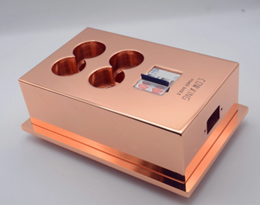
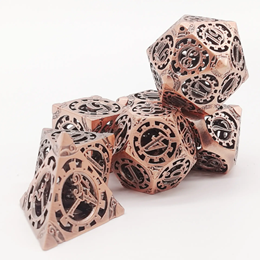
Understanding the properties and differences of copper materials will help you make better choices between brass, bronze, or copper alloys. Only if you have a deeper understanding of its different characteristics and differences, you are a qualified developer, designer, engineer, or senior procurement, the following provides you with some details we summarize, which will always help you in some aspects.
Try richconn! now All information and uploads are kept safe and confidential. Get a quote now
Trace elements into copper are inevitable, due to the different characteristics of the elements, they cannot be solid soluble in copper, trace solid solution many solid solutions, infinite miscibility, solid solubility with the temperature decline and drastic decrease, solid phase transition under the solid phase, so the impact on copper properties is very different.
Pure copper is a non-ferrous metal that exists in a pure state. Unlike bronze and brass, this naturally occurring metal can be processed directly.
Brass, on the other hand, is an alloy of copper and zinc. It usually contains lead and may also contain manganese, iron, aluminum, silicon, and other elements.
Bronze is an alloy of copper and usually contains large amounts of tin as its main element. However, it also contains nickel, aluminum, phosphorus, zinc, etc.
More detailed "Influence of Elements on Copper and Copper Alloys"
1.Corrosion resistance
One way for manufacturers to distinguish bronze from copper is by corrosion resistance. Bronze, as an alloy of copper, usually oxidizes when exposed to air. As a result, it forms a protective layer (mottled passivation film). Therefore, bronze is well protected against corrosion.
Bronze can withstand saltwater environments. Therefore, it is very useful in marine applications and marine accessories. However, copper is reduced in constant exposure to chlorine compounds. Copper also forms a protective layer of oxidation and has excellent corrosion resistance.
Brass, on the other hand, is less resistant to corrosion than bronze and copper. However, some brass varieties that contain a lot of manganese are generally more resistant to corrosion. In summary, bronze is the most corrosion-resistant of the three metal options.
2.Durability
Bronze is a strong and durable material that does not bend easily. Its high corrosion resistance also makes it very durable. Copper is also a strong material. However, it is softer than bronze. You can stretch and bend it easily, but it will hardly crack or scratch. Therefore, it is a durable material. However, brass is prone to cracking and breakage. Its corrosion resistance is also poor.
Thermal conductivity
The thermal conductivity of pure copper does not change with increasing temperature, while the thermal conductivity of alloy copper increases with increasing temperature. Therefore, the thermal conductivity of red copper does not change, and the thermal conductivity of brass changes.
3.Conductivity
Red copper has excellent electrical conductivity and is used as a measure of electrical conductivity, that is, the conductivity of red copper is defined as 100%, which measures the conductivity of other metals. According to this standard, brass has a conductivity of 28%.
4.Hardness
The hardness of a material refers to its ability to resist local deformation. In terms of hardness index, brass has a hardness of 3-4 and pure copper has a hardness of 2.5-3, so brass is harder, and the higher the zinc content, the harder the brass is.
5.Weight
The weight factor also plays a vital role in helping you choose between brass, bronze, or copper. According to their density, bronze, and brass are very close in weight. However, if you must choose bronze or brass for projects that require lightweight metal, brass is a better choice. This is because it is the lightest of the three metals. Its density is about 8720 kg per cubic meter.
Bronze, on the other hand, has a density of about 7400 to 8900 kg per cubic meter. Copper is the heaviest of the three metals, with a density of 8930 kilograms per cubic meter.
6.Processability
Compared to brass and bronze, copper has better workability. It is a more flexible metal that can be bent, rotated, and other machining. In addition, copper alloys are generally highly malleable. Bronze is a harder, stronger metal that is not prone to bending. Brass is also less flexible, which makes it less workable.
7.Weldability
In their respective fields, brass, bronze, and copper are all weldable. These metals are joined using silicon bronze welding, MIG equipment, or other techniques. Oxygen-free copper is generally easier to weld. The same goes for copper oxide. MIG and TIG are the most popular techniques for welding this metal.
Brass alloys also support MIG, TIG, and silver welding. However, leaded alloys are more difficult to solder. Alloys with lower zinc content are easier to weld. Among bronze varieties, lead-free bronze is fair in weldability. However, they often crack under stress, and SMAW may be the best technique. But our common cast brass is not weldable.
8.Surface finish
In terms of surface finish, there are significant differences between brass, bronze, and copper. Because different materials require different surface treatment methods when facing specific needs. Making the right choice can guarantee how a material will perform in a specific environment.
For example, brass and bronze often require special oxidation treatment to form a protective oxide film. This film can prevent the external environment from attacking the metal surface. Copper, on the other hand, may require stricter corrosion protection measures to ensure a stable service life over a long period.
Therefore, when considering the use environment and requirements of materials, it is particularly important to choose the appropriate surface treatment method. Different metal materials require different care to ensure they are always in top condition
9.Price
The price of copper is relatively low, averaging around 60 yuan per kilogram. The price of alloys varies depending on their composition, ranging from tens to thousands of dollars. In general, alloys containing rare metals (such as platinum, palladium, etc.) are more expensive, while alloys containing common metals (such as aluminum, magnesium, etc.) are less expensive.
There are many reasons why the price of alloys is higher than copper, such as higher technical costs and equipment investment costs for alloy production; more R&D and experimental costs are required for the ratio between different components; the cost of raw materials and transportation costs of some alloys is also higher.
Differences in electrical conductivity of brass, bronze, and copper
The difference in electrical and thermal conductivity will help you choose the best material for your application.
1.Electrical conductivity
Copper is one of the materials used in the manufacturing industry to grade electrical materials. Manufacturers express the conductivity grade of these materials in terms of copper. Therefore, we can say that copper has a conductivity of 100%.
Brass, on the other hand, conductivity is about 28% that of copper, while bronze has about 15%. The lower rating of bronze may be due to its alloying element composition.
2.Thermal conductivity
Of the three metals, bronze has the highest thermal conductivity. Its thermal conductivity is between 229 and 1440 BTU/hr-ft2-°F. Copper followed by 223 BTU/hr-ft2-°F. Brass has the worst thermal conductivity of the three metals, with a thermal conductivity of 64 BTU/hr-ft2-°F.
The difference in the strength between brass, bronze, and copper
The strength of the material is critical to helping you decide on the most appropriate application. Therefore, you must consider this factor when comparing brass vs bronze vs copper.
3.Tensile Strength
When metal strength is critical to the application, bronze is often the ideal choice. This is because its tensile strength is between 350 and 635 MPa. Brass is second, with the highest tensile strength of 338 to 469 MPa. Copper, on the other hand, has a tensile strength of 210 MPa.
4.Yield strength
Compared to brass and copper, bronze has a higher yield strength. It has a yield strength of 125 - 800 MPa, while brass has a yield strength of about 95 to 124 MPa. Copper has the lowest yield strength at 33.3 MPa.
5.Molding capability
Your materials must meet quality requirements in terms of formability. Therefore, it is better to make the right choice.
6.Formability
Copper can withstand plastic deformation without damage. As a result, it has exceptional formability, and manufacturers can make micron-sized threads from this metal. Some bronze alloys are also very malleable. A good example is PB1 phosphor bronze, which achieves cold forming. On the other hand, brass is difficult to form due to its very low flexibility.
7.Melting point
The lower the melting point of the material, the better its formability. Copper's melting point of 1085°C may limit its formability. Bronze, on the other hand, has a melting point of 913°C, while brass has a melting point of 927°C.
8.Look and feel
Distinguishing between brass, bronze, and copper can be difficult because they have similarities in appearance. However, there are some subtle differences to be aware of.
9.Color
It can be easy to distinguish bronze from brass by color. The brass has a dark gold color, similar to ordinary stone. This makes brass an ideal material for fittings. Bronze, on the other hand, has a slightly reddish-brown color. The color of bronze is very similar to the color of copper. But the reddish-brown color of bronze has a dull golden hue, while the reddish-brown color of newly exposed copper is very distinctive.
10.Hardness
Copper has a score of 35 on the Brinell hardness scale, while brass scores between 55 and 73. Bronze, on the other hand, scores between 40 and 420. This result shows that bronze is the hardest of the three metals. In addition, it is more brittle and therefore more likely to break.
Richconn provides professional industrial metal fabrication services at competitive prices and short lead times. Don't hesitate to upload your design file to start your project today!
Try richconn! now All information and uploads are kept safe and confidential. Get a quote now
While these metals are suitable for several similar applications, there are some peculiarities. Here are some important applications for brass, bronze, and copper.
Brass is known for its aesthetic and decorative advantages. Its processability and machinability also make it very useful in several other industries. Some applications for brass include:
Valves, pipes, bolts, nuts, screws
Connectors, sockets, wires, and cable accessories
The shell of a clock, a pendulum, musical instruments such as trumpets, trombones, etc.
Ornaments, sculptures, ornaments and crafts
For decorative elements such as door handles, handles, handrails, railings, etc
Fittings and fittings in water supply, heating, and gas piping systems
Brake valves, water pump parts, automotive instruments, etc
Kitchen utensils, cutlery and cooking utensils
Sculptures, jewelry, and other works of art
Various parts and decorations of the ship
The bronze metal sheet is also suitable for several industrial applications. Its various grades make it very versatile. Some of its applications include the following:
Electrical industry: bronze has good conductivity and can be used to manufacture electrical devices such as wires and cables, electrical terminals, switches, etc.
Machinery industry: bronze has certain strength and ductility, and can be used to manufacture bearings, gears, propellers, and other mechanical parts.
Chemical industry: Some bronze alloys can be corrosion-resistant and used in the manufacture of chemical equipment such as reactors, valves, and pipelines.
Construction industry: Bronze can be used to create building materials such as door and window fittings and decorative components.
Light industry: Bronze can be used to make daily utensils, lamps, decorations, etc.
Transportation: Bronze can be used to make marine accessories such as water pipes, valves, rivets, etc.
Military industry: Bronze can be used to make some parts of military equipment.
Communication industry: Bronze can be used to make communication cables.
Music industry: Bronze can be used to make various musical instruments such as brass, brass, etc.
Medical industry: Bronze can be used to manufacture some parts of medical devices.
Copper offers several advantages such as excellent processability, formability, and electrical conductivity. These features make it very useful in a wide range of industries.
Some of the copper applications include:
1. Electrical and electronic fields - conductors in wires and cables
Conductive and thermal conductive elements in circuit boards
Coils and armatures in electrical appliances
Components of resistors and capacitors,
Contacts in various sensors and switches
2. Energy sector
solar photovoltaic cell wiring of cables and coils of wind turbines, coils in power transformers
3. Transportation
Catenary for high-speed rail and trams, cabling harnesses,
Wires in electrical systems for ships.
Electrical connections for aircraft.
4. Consumer Goods
Kitchen utensils such as baking sheets, plates, jewelry, and accessories.
Arts and crafts
5. Construction field
Pipe roof cover in building drainage.
System and radiators and ducts in window heating system
The variety of commercial grades of these metals proves that they are in high demand across multiple industries. This is due to the many beneficial properties they have.
Bronze has better corrosion resistance and brass has slightly worse corrosion resistance. - Bronze conducts electricity and is thermally better than brass.
Brass has better workability and formability than bronze.
Bronze is stronger and harder than brass.
The brass has a more refined exterior and a gold tone.
Bronze has strong corrosion resistance, red copper has poor corrosion resistance.
Red copper conductivity is slightly better than bronze.
The strength and hardness of bronze is significantly higher than that of red copper.
Red copper has better plasticity and workability is better than bronze.
Red copper is more suitable for conductive conduction, bronze is more suitable for mechanical properties.
Brass is more resistant to corrosion than red copper.
Red copper has better electrical conductivity.
Brass is stronger and harder than red copper.
Red copper has good plasticity and processability.
Brass for a more refined look.
1. Consider the need for corrosion resistance according to the use environment. If placed in a humid or corrosive environment, choose bronze with good corrosion resistance.
2. Consider the mechanical properties according to the load on the part. Select bronze that requires high strength, and choose red copper that requires high plasticity.
3. Select materials with good conductivity according to the needs of conductivity or heat dissipation. If the demand for electrical conductivity is high, red copper is preferred, and copper is selected for high thermal conductivity.
4. According to the processing technology requirements, choose alloys with good machinability, such as brass and red copper. Choose brass with good workability for complex shapes.
5. Consider the cost factor. Bronze and brass are more economical than red copper.
6. Pay attention to the service life of the components. For long-term use, choose bronze with good corrosion resistance.
7. Consider the appearance of the product. Choose brass that needs a good look.
8. Pay attention to recycling needs. Red copper is more suitable for recycling.
9. Consult the supplier for material specifications. Never choose materials based solely on experience. Comprehensively consider all factors before selecting the best copper alloy material. You can also consult an experienced supplier for advice.
Richconn: Manufacture metal parts and prototypes for you
If you need more information about these metals or aren't sure which metal to choose, let Richconn help.
Getting expert advice during material selection can give you an edge over your competitors. At Richconn, we have the best technicians and professional mechanics who will select the best materials for your project.
In addition, we provide manufacturing and prototyping services, including sheet metal forming, CNC machining, injection molding, and 3D printing.
After uploading your design file, you can get an automated quote and DFM analysis within 12 hours.
Our manufacturing process is transparent and we can guarantee up to 30% price reduction.
Contact us today and let's get started!
Start your project today
Choosing the right manufacturer is critical to ensuring high-quality results. Here are some suggestions:
Check out their experience and expertise. Look for companies that specialize in brass, bronze, or copper processing. They have expertise in materials knowledge and processing skills.
Assess their capabilities. Make sure they can handle your order volume and scale. Check out their machines and capabilities.
Ask for sources. Quality raw materials are essential for reliable results. Ask about their sourcing approach and supplier network. - Ask for surface treatment options. Copper alloys require various surface treatments to improve corrosion resistance, aesthetics, etc. Ask about the treatments they offer, such as nickel plating, anodizing, etc.
Ask about inspection and quality control processes. This ensures that components meet standards and tolerances.
View feedback from previous customers. This allows you to assess the quality of their services and professionalism.
Compare price quotes. Ask different vendors before making a decision. However, don't just consider price and ignore quality.
View delivery records. Choose a manufacturer that can deliver on time.
Ask for follow-up support. Excellent companies will continue to support you after the project is over. Choosing a trusted, experienced partner can ensure the successful execution of brass, bronze, or copper projects.
There are many factors to consider when choosing the right material. The following tips can help you choose between brass, bronze, and copper depending on your application needs:
If excellent electrical conductivity is required, choose copper. It is the most conductive of the three materials.
If corrosion resistance and seawater corrosion resistance are required, choose bronze. It forms a protective layer and prevents corrosion.
If high strength and tensile strength are required, choose bronze. Its mechanical strength is superior to the other two materials.
If you need a beautiful decorative look, use brass. It has a distinctive gold hue.
If you need materials that are easy to form and machine, choose copper. It is the softest and most malleable of the three.
If weight is a consideration, choose brass. Its density is slightly lower than the other two.
If antimicrobial properties are required, choose brass. It releases copper ions to inhibit microbial growth.
If cost is the main concern, choose brass
Brass、bronze、copper and copper alloys differ in composition, properties, and applications. Here are some of the key differences:
Brass is an alloy of copper and zinc, bronze contains copper and tin, while copper is a pure metal.
Bronze has the best corrosion resistance, while brass has poor corrosion resistance.
Copper has the best electrical conductivity, while bronze has the highest thermal conductivity. In terms of strength, bronze has the highest tensile strength and yield strength.
Copper has the strongest plastic deformation and forming ability.
Bronze is usually more expensive than brass, with copper being the most expensive.
Brass is used in pipe fittings and fittings, bronze is used in industrial components, and copper is widely used in electrical applications.
Bronze has strong corrosion resistance, brass is highly decorative, and copper has excellent plasticity.
Overall, bronze generally exhibits higher hardness characteristics than pure copper. Therefore, it is more durable and more resistant to abrasion. However, the strength and ductility of brass have also improved. It is the cheapest metal, which makes it a consideration option. Copper is corrosion-resistant, conductive, and highly processable.
Brass is cheaper than bronze. This is because brass contains a higher zinc content, while bronze has a higher copper content. Since zinc is generally cheaper than copper, bronze is more valuable than brass.
Brass is suitable for a wide range of applications. Its uses include pipes and tubes, fittings, electronics and electrical terminals, musical instruments, etc.
A: Brass mainly contains copper and zinc, bronze mainly contains copper and tin, and copper is a pure metal.
A: Bronze has the best corrosion resistance because the copper in it forms a protective layer. Brass has poor corrosion resistance.
A: Copper has the highest conductivity at 100% of the standard. Brass is about 28% and bronze is about 15%.
A: Copper is the easiest to plastic deformation and process, followed by bronze, brass has poor processability.
A: Generally speaking, copper has the highest price, followed by bronze, and brass is relatively cheaper.
A: Brass is used for pipe fittings and fittings, bronze is used in industrial parts, and copper is widely used in electrical and electronic products.
A: Factors such as corrosion resistance, strength requirements, conductive requirements, and forming processing requirements should be considered.
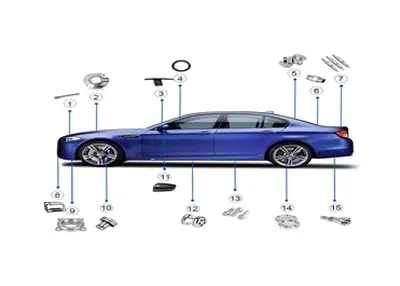 How CNC Automotive Parts Elevate Vehicle FunctionalityJanuary 5, 2024When it comes to the automotive industry, precision and performance are of utmost importance. Manufacturers are constantly striving to enhance the functionality of vehicles, which relies heavily on th...view
How CNC Automotive Parts Elevate Vehicle FunctionalityJanuary 5, 2024When it comes to the automotive industry, precision and performance are of utmost importance. Manufacturers are constantly striving to enhance the functionality of vehicles, which relies heavily on th...view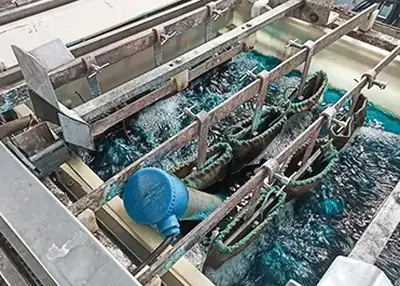 What is Mechanical Testing & How to Test Mechanical Properties of MaterialsDecember 4, 2023Mechanical testing is a series of tests used to determine the mechanical properties of a material as it performs in a particular environment. Mechanical properties are the characteristics that describe how a material behaves and responds when subjected to different types of forces and deformations, such as stress, strain, load, temperature, speed, time, etc.view
What is Mechanical Testing & How to Test Mechanical Properties of MaterialsDecember 4, 2023Mechanical testing is a series of tests used to determine the mechanical properties of a material as it performs in a particular environment. Mechanical properties are the characteristics that describe how a material behaves and responds when subjected to different types of forces and deformations, such as stress, strain, load, temperature, speed, time, etc.view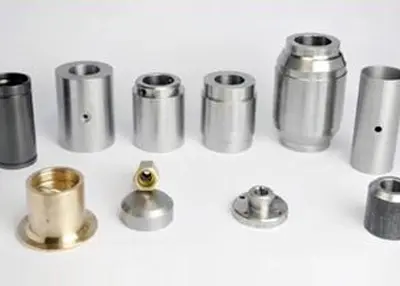 What is a shaft in manufacturing? Detailed Process and TypesMay 4, 2024Explore the detailed process of shaft machining, its types, and surface finish choice. Discover challenges where shaft machining could be avoided.view
What is a shaft in manufacturing? Detailed Process and TypesMay 4, 2024Explore the detailed process of shaft machining, its types, and surface finish choice. Discover challenges where shaft machining could be avoided.view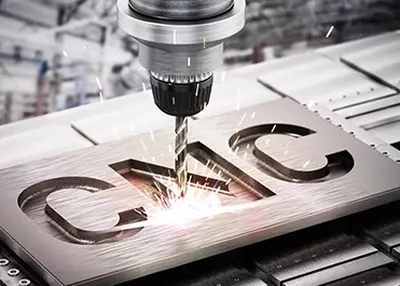 What is CNC: Unveiling the Precision RevolutionSeptember 20, 2023CNC (Computer Numerical Control) is an automated manufacturing technology that utilizes computer control systems to precisely manipulate machine tools and equipment for machining and manufacturing purposes.view
What is CNC: Unveiling the Precision RevolutionSeptember 20, 2023CNC (Computer Numerical Control) is an automated manufacturing technology that utilizes computer control systems to precisely manipulate machine tools and equipment for machining and manufacturing purposes.view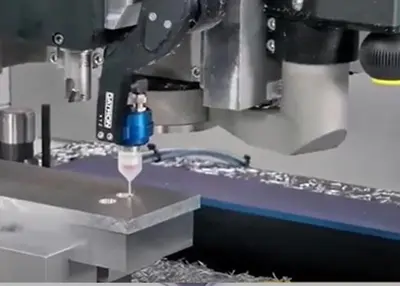 What Are The 3-Axis, 4-Axis, And 5-Axis In Cnc Machining, And What Is The Difference Between Them?June 21, 20223-axis CNC machining, 4-axis CNC machining, and 5-axis CNC machining are terms that are often heard in our industry work. Some users can't tell. For these types of CNC machining, there are still C...view
What Are The 3-Axis, 4-Axis, And 5-Axis In Cnc Machining, And What Is The Difference Between Them?June 21, 20223-axis CNC machining, 4-axis CNC machining, and 5-axis CNC machining are terms that are often heard in our industry work. Some users can't tell. For these types of CNC machining, there are still C...view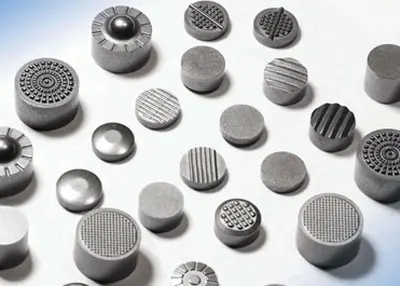 Understanding Steel Material for Custom Prototyping: Properties, Grades, and ApplicationsMarch 14, 2024Let’s explore the diverse properties, grades and uses of steel material in prototyping, from its melting point to its versatility across different industry sectors.view
Understanding Steel Material for Custom Prototyping: Properties, Grades, and ApplicationsMarch 14, 2024Let’s explore the diverse properties, grades and uses of steel material in prototyping, from its melting point to its versatility across different industry sectors.view